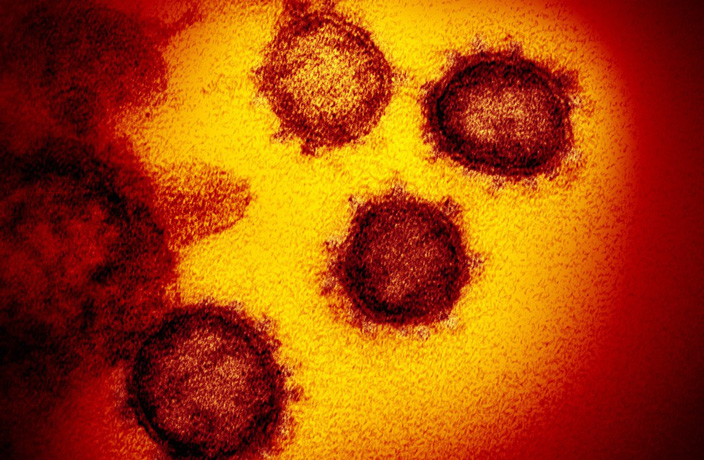Today, November 30, 2022, Guangdong province reported 8,006 new cases of COVID-19. Symptomatic cases accounted for 770 of the total number, whereas asymptomatic cases were 7,236.
The combined number of cases per city is as follows:
Guangzhou 6995
Foshan 236
Shenzhen 199
Dongguan 142
Zhongshan 98
Zhanjiang 97
Jieyang 51
Huizhou 38
Qingyuan 35
Zhaoqing 33
Jiangmen 18
Zhuhai 11
Shantou 11
Shaoguan 11
Maoming 11
Shanwei 6
Chaozhou 4
Meizhou 4
Yangjiang 2
Yunfu 1
What the Hell Happened in Guangzhou today?
Today, there were some strange goings-on in Guangzhou. Firstly, several districts closed nucleic acid testing sites.
Secondly, Guangzhou’s daily COVID-19 press conference was moved from 5pm to 3pm and confirmed the information listed below.
Shortly before the press conference started, Panyu and Liwan districts announced that “all temporary control areas for epidemic prevention and control will be lifted, and the preventive measures of ‘personal protection and avoid gathering’ will be implemented in low-risk areas.”
Tianhe district also announced that measures will be lifted in the temporary control areas of Yuancun Street, Changxing Street, Tangxia Street and Zhuji Street.
After the press conference, Haizhu and Baiyun districts announced they would also be removing all temporary control areas.
As of press time, Guangzhou’s remaining districts have not made such announcements, but we expect them to come soon.
In summary, the aforementioned subdistricts in Tianhe district and the entirety of Haizhu, Panyu, Liwan and Baiyun districts have removed all temporary control areas. However, low- and high-risk areas still remain.
There has been no official announcement as of yet on whether restaurants can reopen (that needs to come from the city's official hygiene department).
But wait, there’s more! Tianhe and Haizhu districts released the following five epidemic prevention and control measures in line with policies made by the Joint Prevention and Control Mechanism of the State Council.
Scientifically and accurately delineate risk areas. In principle, the residence of infected persons and areas with a high risk of epidemic transmission are designated as ‘high-risk areas,’ and high-risk areas should be confined to units and buildings and may not be expanded at will. High-risk areas that meet the conditions for opening should be opened in time and the greatest efforts should be made to reduce the inconvenience caused to people due to epidemic prevention and control.
Epidemic investigations shall be carried out in accordance with scientific and accurate principles and close contacts shall be determined in a timely and accurate manner. The screening areas shall not be expanded at will, nor shall time and space be used as a criterion for determining close contacts.
Implement centralized isolation observation for close contacts. Where possible allow close contacts to isolate at home.
Scientific development of nucleic acid testing. For risk areas, key personnel should carry out nucleic acid testing as required but shall not expand the area of nucleic acid testing and should not carry out mass nucleic acid tests by region.
Guangzhou will continue to encourage citizens to get vaccinated and to get booster shots, especially the elderly, and “store more COVID-related medicines.”
So, the question is, why? Well firstly, the lifting of temporary control areas and the five points mentioned above are in line with the new anti-epidemic measures made by the Joint Prevention and Control Mechanism of the State Council today on November 11.
READ MORE: 8 Things You Need to Know About China’s New COVID Rules
Another reason could be because the meeting of the Standing Committee of the Provincial Party Committee decided that the second plenary meeting of the 13th Guangdong Provincial Committee of the Communist Party of China will be held in Guangzhou on December 1 for one day.
In other good news, today the city’s new reported cases fell from 7,297 to 6,995, a decrease of 302. Symptomatic cases accounted for 541, whereas asymptomatic cases were 6,454.
Cases in Shenzhen
Shenzhen has reported 199 new cases of COVID-19 today, with 74 symptomatic cases and 125 asymptomatic cases.
The number marks a decrease of two cases from yesterday’s 201.
The cases per district are as follows:
1-6: People who arrived in Shenzhen from another province or city.
7: Matian Street, Guangming District.
8: Buji Street, Longgang District.
9-10: Shajing Street, Bao'an District.
11-15: Songgang Street, Bao'an District.
16-18: Xixiang Subdistrict, Bao'an District.
19: Xinqiao Street, Bao'an District.
20: Lives in Fubao Street, Futian District.
21: Huafu Street, Futian District.
22-23: Nanyuan Street, Futian District.
24-29: Shatou Street, Futian District.
30-33: Xiangmihu Street, Futian District.
34: Fenghuang Street, Guangming District.
35-41: Guangming Street, Guangming District.
42: Yutang Subdistrict, Guangming District.
43-46: Bantian Street, Longgang District.
47-48: Baolong Street, Longgang District.
49-50: Buji Street, Longgang District.
51: Henggang Subdistrict, Longgang District.
52: Jihua Street, Longgang District.
53-60: Longgang Subdistrict, Longgang District.
61-62: Nanwan Street, Longgang District.
63-64: Pinghu Subdistrict, Longgang District.
65: Dalang Street, Longhua District.
66-67: Fucheng Street, Longhua District.
68: Guanhu Street, Longhua District.
69: Guanlan Street, Longhua District.
70-74: Longhua Street, Longhua District.
75: Minzhi Street, Longhua District.
76-77: Cuizhu Street, Luohu District.
78-79: Donghu Subdistrict, Luohu District.
80-87: Nanhu Street, Luohu District.
88: Qingshuihe Subdistrict, Luohu District.
89: Nanshan Subdistrict, Nanshan District.
90: Nantou Subdistrict, Nanshan District.
91: Shahe Subdistrict, Nanshan District.
92: Shekou Subdistrict, Nanshan District.
93: Taoyuan Subdistrict, Nanshan District.
94: Arrived in Shenzhen from another province or city.
95: Shiyan Street, Bao'an District.
96: Fenghuang Street, Guangming District.
97-102: Guangming Street, Guangming District.
103-106: Baolong Street, Longgang District.
107: Buji Street, Longgang District.
108: Jihua Street, Longgang District.
109: Longgang Subdistrict, Longgang District.
110-116: Nanwan Subdistrict, Longgang District.
117: Pingdi Street, Longgang District.
118: Longhua Street, Longhua District.
119: Minzhi Street, Longhua District.
120: Nanhu Street, Luohu District.
121: Qingshuihe Subdistrict, Luohu District.
122: Xili Subdistrict, Nanshan District.
123-124: Yuehai Subdistrict, Nanshan District.
125: Longtian Subdistrict, Pingshan District.
126: Meisha Subdistrict, Yantian District.
127: Yantian Subdistrict, Yantian District.
128: Shiyan Street, Bao'an District.
129: Yuanling Subdistrict, Futian District
130: Fenghuang Street, Guangming District.
131-133: Guangming Street, Guangming District.
134: Sungang Subdistrict, Luohu District.
135: Shiyan Street, Bao'an District.
136-137: Guangming Street, Guangming District.
138: Bantian Subdistrict, Longgang District.
139: Henggang Subdistrict, Longgang District.
140: Longcheng Subdistrict, Longgang District.
141: Fucheng Street, Longhua District.
142: Donghu Subdistrict, Luohu District.
143: Huangbei Street, Luohu District.
144: Xili Subdistrict, Nanshan District.
145: Hangcheng Street, Bao'an District.
146-147: Songgang Subdistrict, Bao'an District.
148: Futian Subdistrict, Futian District.
149: Yuanling Subdistrict, Futian District.
150: Bantian Street, Longgang District.
151: Ji Street, Longgang District.
152: Minzhi Street, Longhua District.
153: Nanhu Subdistrict, Luohu District.
154: Taoyuan Subdistrict, Nanshan District.
155: Xili Subdistrict, Nanshan District.
156: Merchants Street, Nanshan District.
145-156 were detected in key personnel screening for non-closed-loop management
157: Nanshan Subdistrict, Nanshan District, and was detected during cross-regional investigation.
158: Songgang Subdistrict, Bao'an District.
159: Fenghuang Street, Guangming District.
160: Jihua Street, Longgang District.
161: Longcheng Subdistrict, Longgang District.
162-163: Nanwan Street, Longgang District.
164-165: Fucheng Street, Longhua District.
166: Donghu Subdistrict, Luohu District.
167: Songgang Subdistrict, Bao'an District.
158-167 were detected during active visits
168: Songgang Subdistrict, Bao'an District.
169: Xin'an Street, Bao'an District.
170: Meilin Street, Futian District.
171: Gongming Street, Guangming District.
172-173: Guangming Street, Guangming District.
174-175: Yutang Street, Guangming District.
176-178: Baolong Street, Longgang District.
179: Buji Street, Longgang District.
180: Jihua Street, Longgang District.
181: Longgang Subdistrict, Longgang District.
182: Nanwan Street, Longgang District.
183-184: Dalang Street, Longhua District.
185-189: Fucheng Street, Longhua District.
190-192: Longhua Street, Longhua District.
193-194: Minzhi Street, Longhua District.
195: Donghu Street, Luohu District.
196-197: Huangbei Street, Luohu District.
198: Shahe Subdistrict, Nanshan District.
199: Yantian Subdistrict, Yantian District.
Foshan
After the city reported 236 new cases of COVID-19 today, the following measures have been implanted:
Persons coming from Guangzhou’s Haizhu, Liwan, Baiyun, Tianhe and Panyu districts need to isolate at home for three days and get tested on days 1, 2, 3 and 5.
Any other person coming from Guangzhou should do three tests in three days. If said persons gets a yellow health code while in Foshan, they must isolate at home for three days.
Anyone returning from Xinjiang Uygur Autonomous Region (including Corps), Inner Mongolia Municipality, Qinghai Province, Zhengzhou City in Henan Province, Chongqing City in Gansu Province, Lanzhou City in Gansu Province, Shijiazhuang City in Hebei Province, Shuozhou City in Shanxi Province, Xi'an City in Shaanxi Province, Changchun City and Songyuan City in Jilin Province, Chengdu City in Sichuan Province, Wuhan City in Hubei Province should isolate at home for three days should also do four days health monitoring (‘3+4’) and get tested on days 1, 2, 3, 5, 7 .
If you return to Foshan from Gansu Province (except Lanzhou), Tibet Autonomous Region, Shanxi Province, Taiyuan, Xinzhou, Jincheng, Luliang, Datong, Jinzhong, Xianyang City, Yulin City and Ankang City of Shaanxi Province, Kunming City and Dali Bai Autonomous Prefecture of Yunnan Province, Beijing City, Binhai New Area and Xiqing District of Tianjin City, Xingtai City, Handan City and Langfang City of Hebei Province, Guilin City of Guangxi Zhuang Autonomous Region, Suihua City and Harbin City in Heilongjiang Province; Changsha City and Huaihua City in Hunan Province; Jinan City and Liaocheng City in Shandong Province; Deyang City, Bazhong City and Nanchong City in Sichuan Province; Shenyang City in Liaoning Province; Yinchuan City and Guyuan City in Ningxia Hui Autonomous Region, you undergo three days of health monitoring and get tested on days 1, 3, 5 and 7.
Any other person who has returned to Foshan from outside the city needs a negative nucleic acid test issued within 48 hours.
For all the latest GBA (and China) COVID-19 news, follow us on WeChat:

[Cover image via NIAID-RML]





















0 User Comments